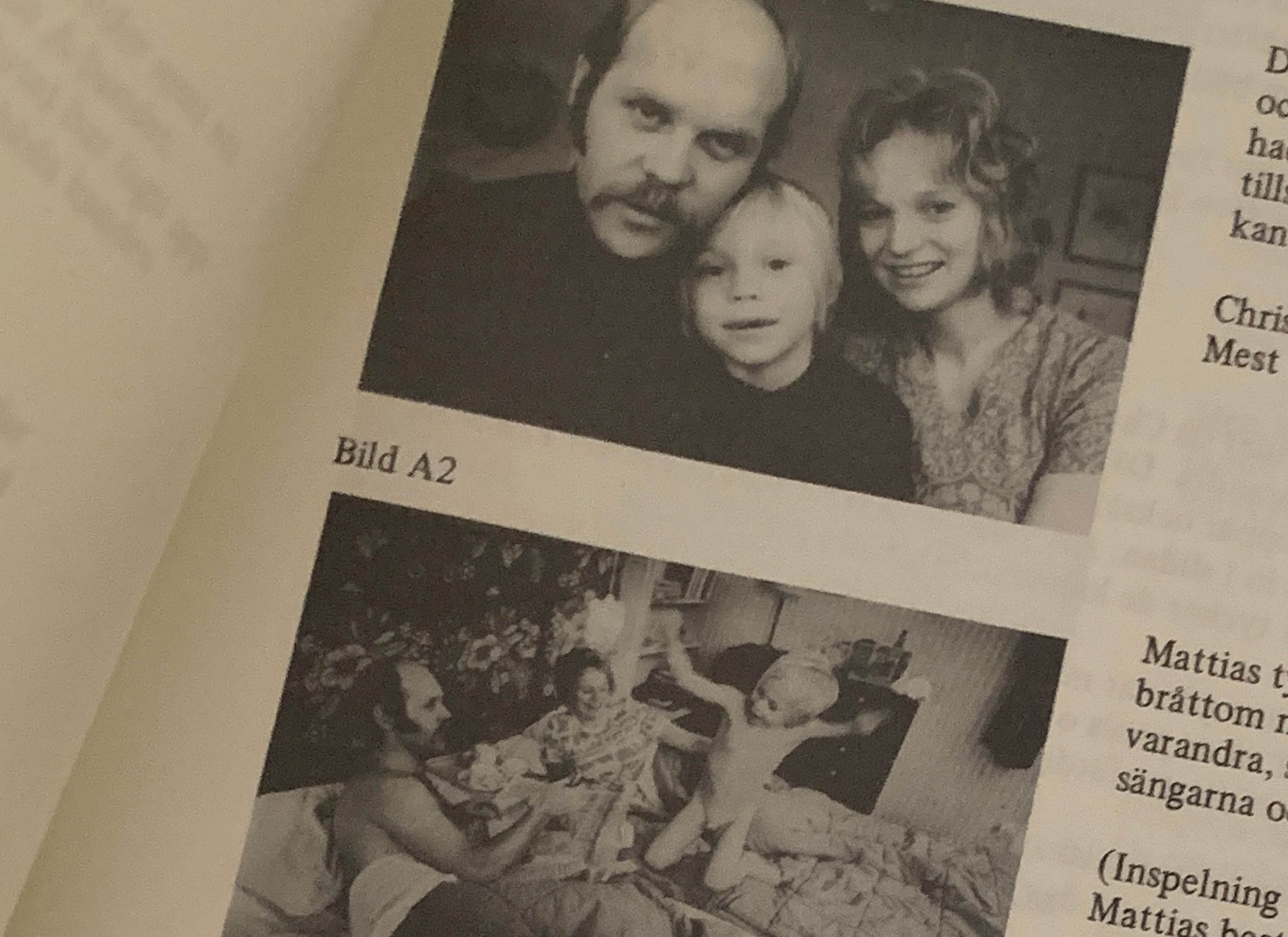
It’s here. It’s unavoidable. The first lesson of the day is Biology, and today’s chapter is Reproduction. That’s right: today is “Sex Ed” day. You can feel the tension in the room; textbooks lie untouched on the desks, and in walks the teacher, who’s barely holding it together. The façade, however, comes crumbling down as soon as the projector hisses to life, showcasing an image of a naked body: breasts, vulva, body hair, front and center. One snicker, one whistle, one inappropriate remark, and quickly laughter starts to ripple through the room. The tone is set; no one is going to take this class seriously now. Yet the teacher is determined to get this chapter over with, so you just have to sit there cringing and pray to your deity of choice that you will be spared the embarrassment of answering any questions.
Depending on who you are, where you live in the world, and what decade you were born into, this classroom scenario might vary greatly—or not occur at all. In Sweden, a country long hailed as the world’s leader in sex and gender education, this scene repeats with surprising regularity. Sex education officially begins in the fifth grade of primary school, with lessons on the genetic and hormonal determinants of sex, conception, and reproduction; and later it returns in the eighth grade with a more in-depth exploration of these topics. There’s nothing unusual about this; in fact, sex education has long been normalized in the country, which was the first in the world to instate compulsory sex education. Although this so-called “Scandinavian model” is continually praised by international experts, those of us who have experienced it tend to roll our eyes as we reminisce about the awkward, uncomfortable experience. After all, what looks good on paper often loses its appeal when translated into practice.
“Is now the time when compulsory sex education will finally reflect the full spectrum of sexual practices and gender identities?”
According to a 2011 study conducted solely among self-identified females, most respondents thought that topics like sexual assault, sexual harassment, abortion, and pornography were insufficiently covered, and they believed that sex education should be more extensive and teachers ought to be better prepared. This August, the Swedish National Agency for Education is launching its new sex education reform, intended to introduce a more holistic view on gender and sexuality. It is the latest of a long lineage of reforms and updates since the curriculum was first introduced in the mid-1950s. Throughout this time, schools have been continuously trying—but never really succeeding—to catch up to the ever-changing society. Over the past decades, major shifts have challenged centuries of Western biological determinism, eroding naturalized concepts such as the gender binary and heteronormativity. It begs the question: is now the time when compulsory sex education will finally reflect the full spectrum of sexual practices and gender identities?
Let’s talk about sex: A brief history
Since the beginning of the 1900s, sex education has been present in a non-institutionalized way within the Swedish education system, with a focus on the importance of personal hygiene, infection, and health awareness. Major events and societal changes eventually pushed for its expansion. In the 1930s, Sweden introduced measures to promote access to contraceptives and legalized abortion under special circumstances, and in 1944 the country decriminalized homosexuality. Shortly before, in 1942, sex education became an optional part of the school curriculum, but the first teachers’ guide for the subject wasn’t published until 1945. After acknowledging a lack of parental guidance on the subject, ten years later in 1955, sex education became mandatory nationwide, focusing on the biology of reproduction, while also promoting sexual abstinence—unsurprising for a largely Protestant society. Even though Sweden’s Freedom of Religion Act was instituted in 1951, this acted as the final step in separating the church from the state.
“Athough this version [the 1977 curriculum] depicted men and women more as equals, it still only addressed heterosexual relationships and omitted anyone outside of the heteronormative sphere.”
Along with the free-spirited mindset of the 1960s that peaked with the 1967 “Summer of Love” in the U.S.A., sex became a hot topic in Sweden as well, creating a major generational shift. As a result, students defiantly distanced themselves from the conservative and outdated textbooks provided by Swedish schools and the shame and guilt they exhorted. However, despite the more progressive times, yet again, the curriculum was struggling to adapt. In 1969, a new teachers’ guide was issued in an attempt to update the curricula, but it still maintained a strong stance on abstinence. After extensive reevaluation, the curriculum was again redesigned in 1977 to include and recognize alternative relationship dynamics such as cohabitation, acknowledging that not everyone dreams of marriage. Although this version depicted men and women more as equals, it still only addressed heterosexual relationships and omitted anyone outside of the heteronormative sphere. Furthermore, teachers were free to expand or abbreviate the list of suggested topics to be covered, so the curriculum varied wildly. In the late 1980s, an additional teachers’ guide was published as a response to the HIV and AIDS pandemic, highlighting the importance of education on safe sex.

The next update came almost two decades later, in 1994. From what I could ascertain, this version mentions sex education merely in passing and attributes the responsibility to enforce the subject to the school’s principal. With a lack of clear guidelines, sex education could differ greatly from city to city or even school to school, thus remaining largely dependent on local and individual biases. The next revision came in 2000 but was still somewhat vague. A significant change was in nomenclature: instead of “sex education,” this curriculum listed “issues of love, sexuality, and cohabitation” as topics to be addressed within the discipline of Biology, giving teachers the freedom of choice to decide what topics to address and how to do so.
This was the “Sex Ed” I experienced in the early 2000s as a teenager in the midst of discovering my own sexuality. Although it’s been a while, I still recall the first awkward textbook introduction, which was followed by a series of short films covering topics such as the inner workings of the vagina, the surprisingly long lifespan of sperm, and some gruesome visuals of various STDs that will forever be imprinted on my retinas—a not-so-subtle reminder of the importance of condoms. Although the old overhead projector has now been replaced by a digital beamer, the substance of what is being taught remains just as stale as before. In my time, there was, however, the addition of “theme days,” when students were divided into binary groups of girls and boys, and asked to briefly discuss topics like puberty, virginity, and “HBT”-matters; then we were pointed to where to get answers if we had any further questions. I vividly recall one of my classmates describing how she would like to lose her virginity in a heart-shaped bed in a room filled with rose petals, shaggy carpeting, and mirrors. I remember sitting there dumbfounded and asking myself: “Where the hell did she get that image from?” This made it apparent that I wasn’t the only one who had stumbled across sleazy ’80s pornography while browsing the internet. Looking back, I don’t think I learned anything useful in those classes. Like many of my peers, I was left with the impression that I had to learn about sex elsewhere. My alternative self-education included the internet, confused conversations with friends, and multiple impromptu lectures from my older siblings, one which even included a visual demonstration on how to properly put on a condom with the help of a banana.
“Like many of my peers, I was left with the impression that I had to learn about sex elsewhere.”
The following update came in 2011, after new laws pushed schools to further promote gender equality in the classroom, and it introduced topics of “identity, equality, and relationships,” as well as “love and responsibility.” Just like its predecessor, this new curriculum focused on preventing sexually transmitted diseases and unwanted pregnancies. However, for the first time, it addressed how notions around sexuality can differ on individual, cultural, and historical levels, thereby shedding some light on the racist Western history of gender norms. The program also introduced cross-subject teaching whereby, for instance, literature teachers may discuss the different ways romantic love is portrayed through novels or poetry, and history teachers may talk about the (r)evolution of womxn’s rights movements. But even with these new initiatives, kids and adolescents were developing problematic relationships to sex. With smartphones in every pocket, the internet became the new go-to resource for learning, leading to scarring consequences.
Meet your new teacher: Pornhub
Since the early 2010s, sex education has become increasingly more common in Swedish daycares and kindergartens, introducing notions like self-awareness, personal space, body integrity, and “stranger danger.” However, after this first experience, sex education only reappears again in fifth grade, when kids are on average around eleven years old, thus creating the first disconnect. The second and more problematic gap occurs later, between fifth and eighth grade, or between pre-puberty and actual puberty, a crucial period physically and mentally when sexuality flourishes and romantic interests first start to develop.
“Like it or not, Pornhub has become a space for sex education. [...] This, in turn, has created ‘a moral grey zone’ where unsolicited dick pics, although illegal, are increasingly normalized, paving the way to more scarring sexual behavior.”
This lack of continuity pushes children as young as eleven to actively seek information about sex on the web, which may lead many to rely on porn. According to the Ombudsman for Children in Sweden, which started mapping the effects of pornography on children and young adults in 2020, the average age of first exposure to porn varies slightly between genders and sexual orientation, but most encounters happen around the age of thirteen, with many at a much more tender age. Like it or not, Pornhub has become a space for sex education.
Without the ability to properly process what they find online, kids and pre-pubescents are left to fend for themselves. This confuses children into thinking that what they see on their screens is real sex; however, most often, it’s merely a narrow, warped fictionalization. This, in turn, has created “a moral grey zone” where unsolicited dick pics, although illegal, are increasingly normalized, paving the way to more scarring sexual behavior. In 2017, statistics showed that young adults and teenagers more frequently turn to sexual stimulants such as Viagra because they feel that they are not living up to the “expectations” of what sex should be. Prescription drugs such as Tramadol, an opioid mainly used for pain relief, have also been increasing in popularity among teenagers and young adults who use it to physically and mentally numb themselves before sex as a way to improve their endurance. However, Tramadol has been proven to act as a gateway drug, as well as reportedly the go-to drug for Swedish criminals who seek similar numbing effects to calm their nerves before heists. Meanwhile, medical professionals throughout our country are sounding the alarm, as more and more wxmen are seeking medical assistance for injuries that have occurred due to violent sex. The phenomenon has sparked debates on whether parents and the educational system are failing our children, and what can be done to counteract it.
Through resilience and gritted teeth
But it’s not all doom and gloom. In the wake of global feminist movements such as #niunamenos and #metoo, Swedish society has been rapidly embracing progressive measures. The country led the way in normalizing non-binary gender identities with the creation of the gender-neutral pronoun Hen, which was officially added to the Swedish Academy Glossary (SAOL) in 2015. In 2017, hundreds of Swedish students and alumnae took over Twitter with the hashtag #tystiklassen (“silence in the classroom”), reporting cases of sexual harassment and abuse. In July 2018, a new sex crime legislation also known as the “consent law” was put into effect, clearly stating that anything other than a clear Yes is a No, providing clearer guidance for prosecution and greater legal protection for victims of sexual assault and rape.
“The new [2022] curriculum aims to create a more holistic and intersectional understanding of gender and sexuality, focusing on promoting consent and fighting gender violence and oppression.”
This is why, as of July 1, 2022, the Swedish National Agency for Education is launching another much-needed sexual education reform, which has been rebranded “Sexuality, consent, and relationships.” The new curriculum aims to create a more holistic and intersectional understanding of gender and sexuality, focusing on promoting consent and fighting gender violence and oppression. It integrates sex education into both the social and natural science disciplines and foresees thematic days, partnerships with external actors, and institutional channels to quickly address instances of abuse. This is the first curriculum to tackle pornography upfront; by addressing this rather taboo topic head-on, the aim is to assist critical thinking and create awareness and understanding of what effects pornography and the porn industry may actually have on our society—not just from the consumer perspective, but also from the creators and actors. However, despite all of these changes, there is still the lingering question: are the teachers themselves prepared for these changes?

This is why, in conjunction with this new reform, comes a homonymous book Sexuality, Consent, and Relationships, written by molecular biologist Erik Bäckström and criminologist and gender scientist Nina Rung. Although the authors agree that reform has every potential to be groundbreaking, they voice concerns regarding teachers’ lack of education on how these changes will be implemented and practiced. Sexuality, Consent and Relationships is a handbook for everyone working within the educational system to help them navigate the new curriculum and guide them how to approach the topics, as well as how to best tackle difficult questions that might potentially occur. The book includes guides for sixteen different subjects, including social studies and history, expanding far beyond the limitations of those old biology textbooks.
While society continues to change at an increasing speed, institutions remain notoriously slow. Sexuality, however, is an integral part of life, and sex education should be a constant throughout all ages—an ongoing dialogue between educators, parents, and their children. For the past seven decades, Swedish schools have continuously faced the same pitfall: they themselves are not enough, and educators cannot bear the full responsibility of sex education. Could this new guide help bridge the gap, and act as an incentive for us—parents—to relearn about sex and get more involved in our kids’ sex education? We can only hope!
Amanda Lorentzon (she/her/non) is a transdisciplinary designer with a passion for questions and curiosity as her guide. Intrigued by what she does not understand, she views the unknown as an abstract puzzle that draws her in. Combined with a strong impulse of wanting to understand, this usually results in excessively asking: Why? What if? How? Experience taught her that these questions may not always be appreciated or welcome; however, embracing the discomfort, she continues to ask. To gain new perspectives, Amanda examines the unknown through various lenses and deconstructs it to explore different design methods. However, as patterns and reason emerge within the puzzle, her work’s shape is almost always a surprise.
Title image: Sexualkunskap för mellanstadiet (Sexual education for primary school school Source: Liber Publishing.
The title of this vertical, Epistemic Activism, is an homage to the disabled, nonbinary Iranian/SWANA designer and researcher Aimi Hamraie. In their book Building Access: Universal Design and the Politics of Disability, epistemic activism is described as a form of
political action that occurs within academic fields to shape social norms and practices.














